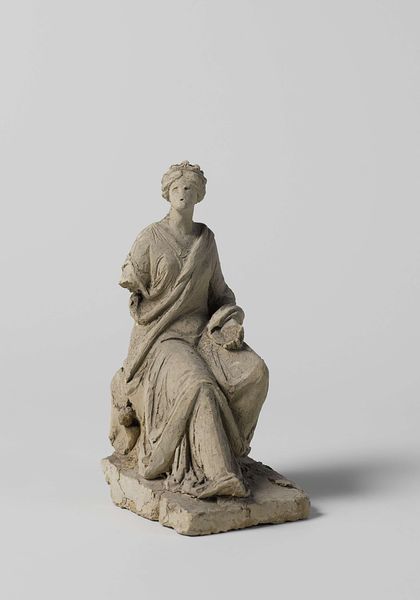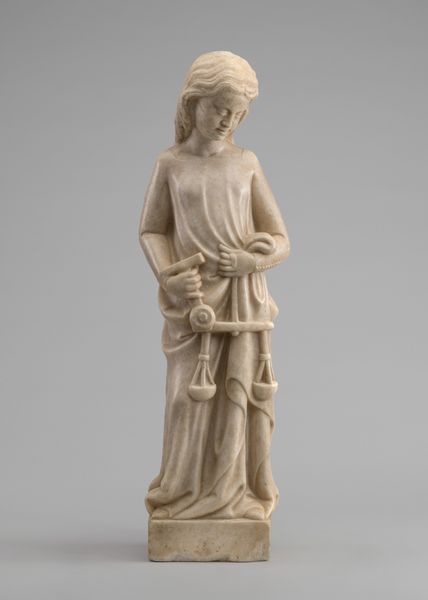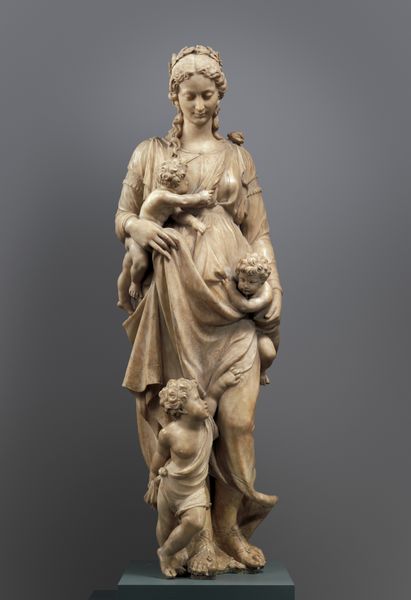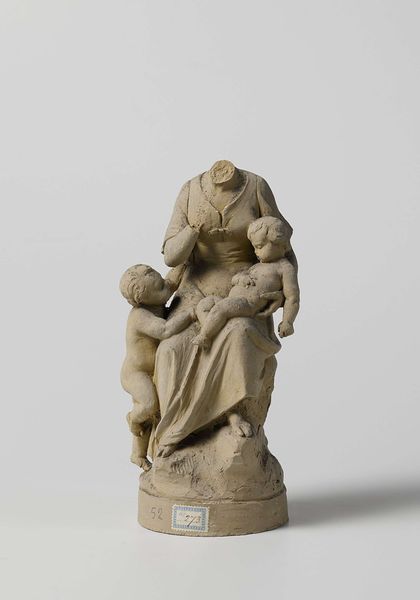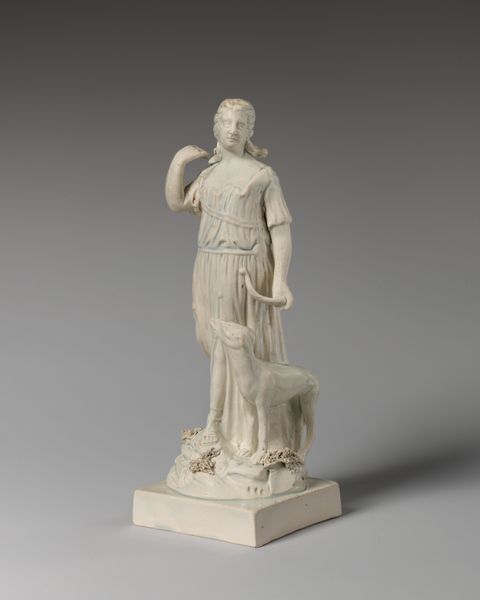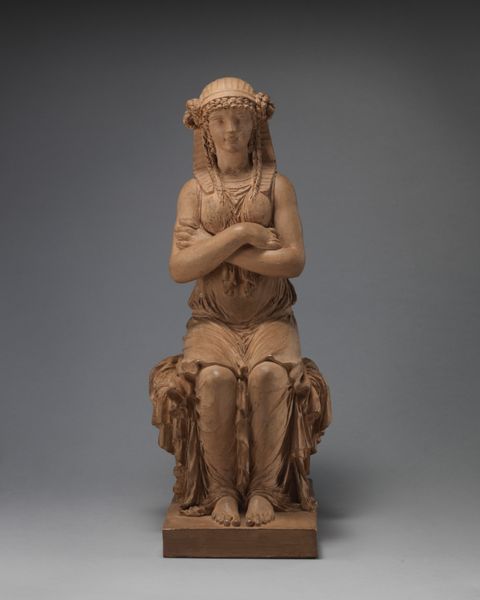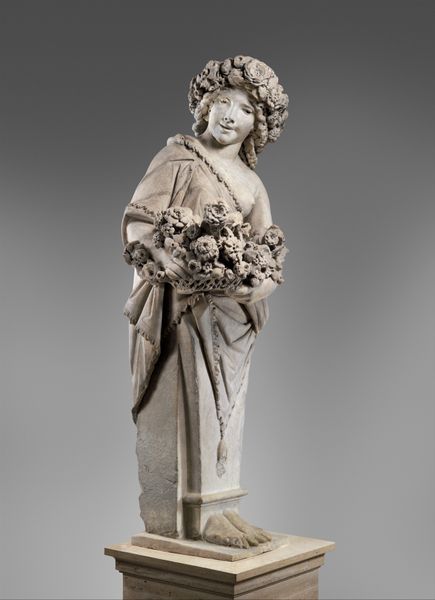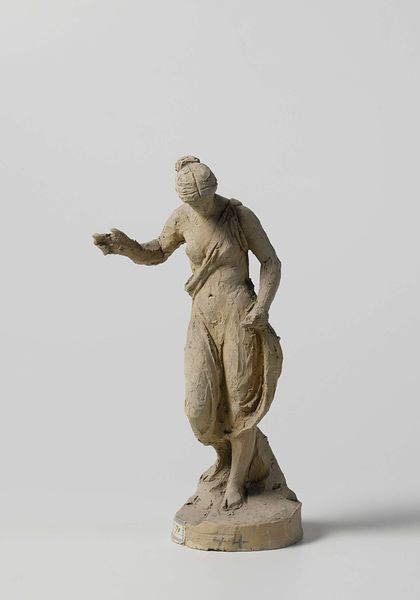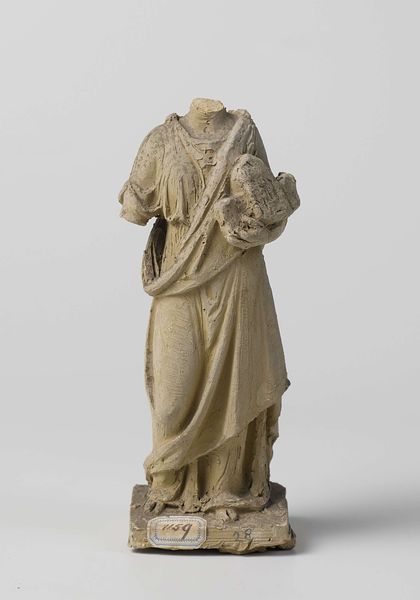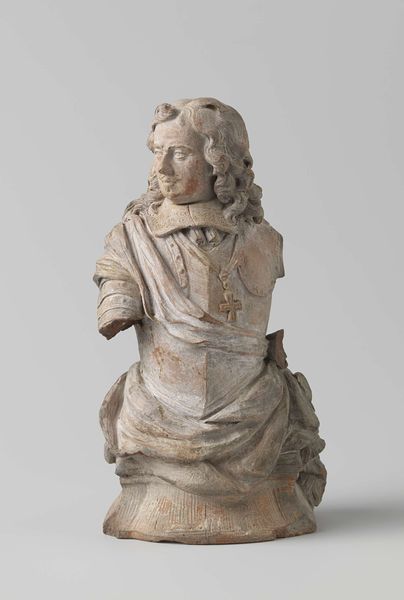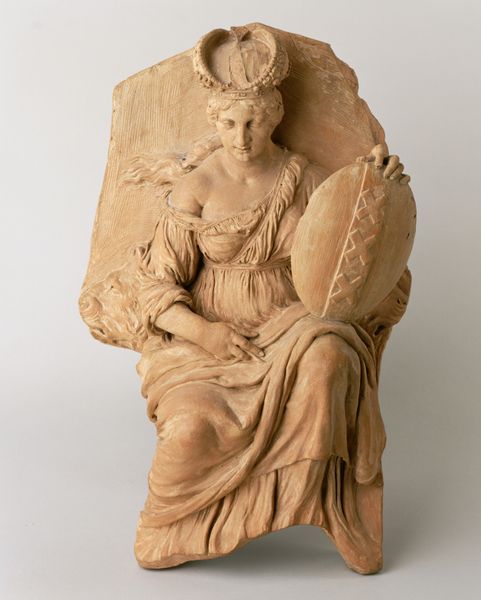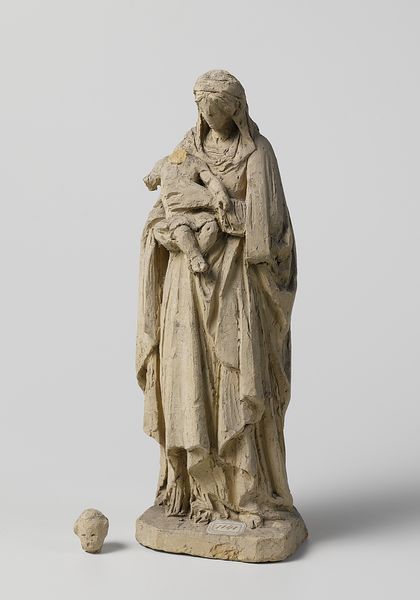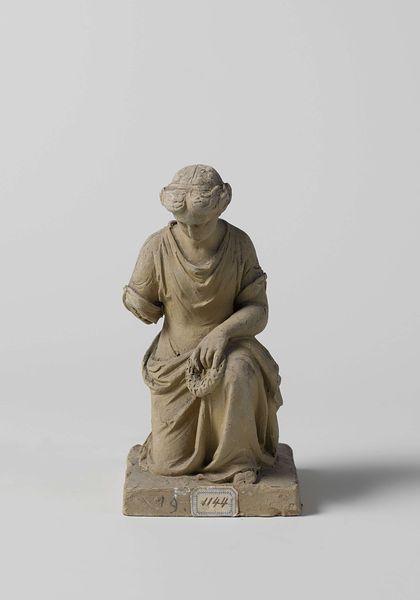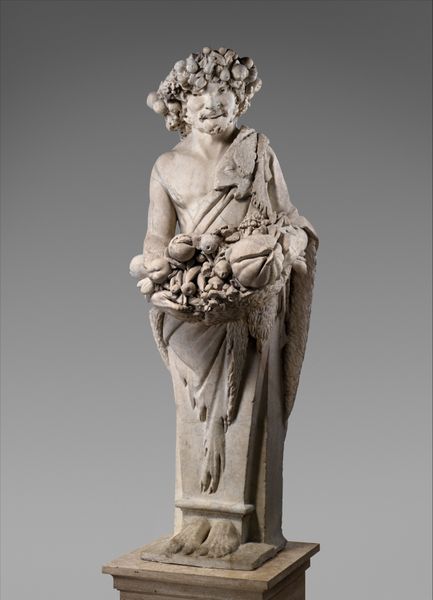
carving, sculpture
#
portrait
#
carving
#
sculpture
#
classical-realism
#
figuration
#
sculpting
#
sculpture
Dimensions: height 19 cm, width 9 cm, depth 5.3 cm
Copyright: Rijks Museum: Open Domain
Curator: What a serene piece. There’s an air of antiquity surrounding it. Editor: It’s hard to ignore the stark materiality, isn’t it? I'm struck by how raw the carving is. What is the story behind this piece? Curator: This sculpture, entitled "De Kunst," comes to us from Eugène Lacomblé, sometime between 1800 and 1900. The piece is crafted from, well, judging by the texture, some form of sculpted clay. Editor: "The Art." I’m thinking about what the very conscious choice of clay signifies in that moment. Was Lacomblé highlighting a departure from, say, marble, to democratize art production in some way? Making it accessible? Or to center something about a “return to earth?" Curator: That's an interesting angle. Clay is, fundamentally, earth. I’m seeing an exercise in classical-realist sculpture, with that emphasis on material suggesting labor and connection to the earth itself. The choice might also stem from what the artist could readily access or afford. Editor: The drape and posture feels…almost regal, while the medium suggests something about labor, about someone shaping something with their own two hands, as you noted. Did Lacomblé work primarily in this medium? What were the social forces that shaped the production and reception of work? What are the politics surrounding art from this period? Curator: To be frank, this question makes me ponder a range of social factors, especially considering the interplay of material accessibility and artistic choices. As for the artist's broader output, it’s really his choice to showcase art in that form! Editor: True, but consider also, it speaks to historical inequalities in resources and opportunity, right? That artistic expression isn't created in a vacuum. It feels like this tension is important. Curator: Indeed, thinking of our access to "high art" as an expression of the everyday is thought-provoking. Editor: Ultimately, by displaying and investigating works like this, perhaps we question the traditional hierarchies. Food for thought, at least.
Comments
No comments
Be the first to comment and join the conversation on the ultimate creative platform.
